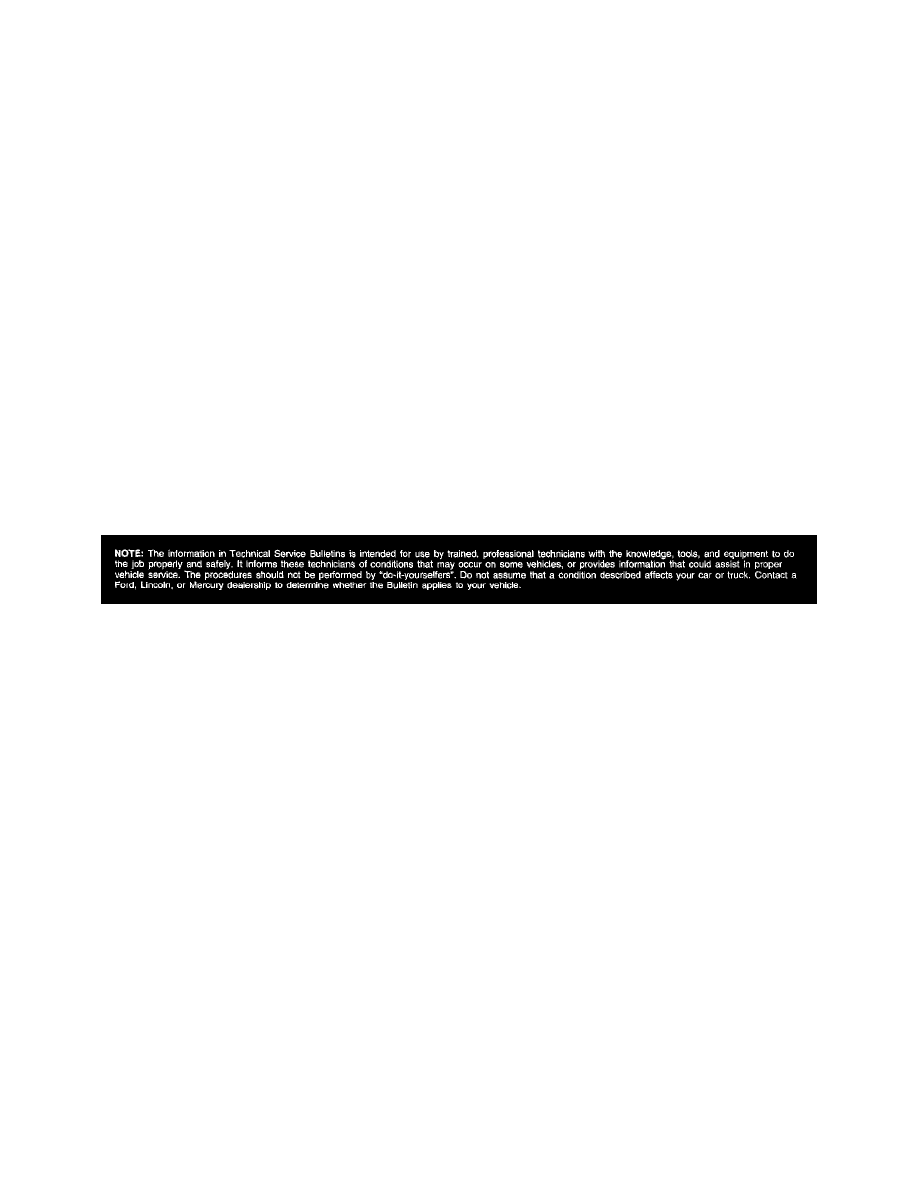Explorer AWD V6-4.0L VIN K Flex Fuel (2003)

Technical Service Bulletin # 03-13-6
Date: 030707
Engine Controls - No Start Condition
Article No.
03-13-6
07/07/03
^
DRIVEABILITY - NO-CRANK - SERVICE TIPS
^
ELECTRICAL - NO-CRANK - SERVICE TIPS
FORD:
2002-2003 EXPLORER
LINCOLN:
2003 AVIATOR
MERCURY:
2002-2003 MOUNTAINEER
ISSUE
Some 2002/2003 Explorer 4dr, Mountaineer, and 2003 Aviator vehicles may exhibit a no-crank condition
ACTION
Refer to the following diagnostic Service Tips for details.
OTHER APPLICABLE ARTICLES: NONE
WARRANTY STATUS: INFORMATION ONLY
Disclaimer
Service Information
NOTE
PCM REPLACEMENT IS GENERALLY NOT AN EFFECTIVE REPAIR FOR NO-CRANK CONDITIONS.
Perform Procedure 1, 2 or 3 depending on the specific no-crank symptoms experienced.
1.
INTERMITTENT NO-CRANK OR CUSTOMER COMPLAINT CANNOT BE DUPLICATED
NOTE
PERFORM THE FOLLOWING INSPECTIONS/REPAIRS IN THE SEQUENCE SHOWN.
Assure good battery charge condition.
a.
Perform PCM Quick Test:
^
If PATS Diagnostic Trouble Code's (DTC's) exist, go to PATS diagnostic in Explorer/Mountaineer or Aviator Workshop Manual
Section 419-01.
^
If powertrain DTC codes exist go to PCED Manual Section 4.
b.
Check for loose connection of the B+ battery cable to the Battery Junction Box
(BJB):
^
If connection is loose, torque battery cable terminal nut on BJB to 144 lb-in. (16.4 N.m).
c.
Check for proper torque on starter solenoid terminal nuts.
The B+ terminal nut should be torqued to 144 lb-in. (16.4 N.m) and the S terminal nut should be torqued to 65 lb-in. (7.4 N.m).
